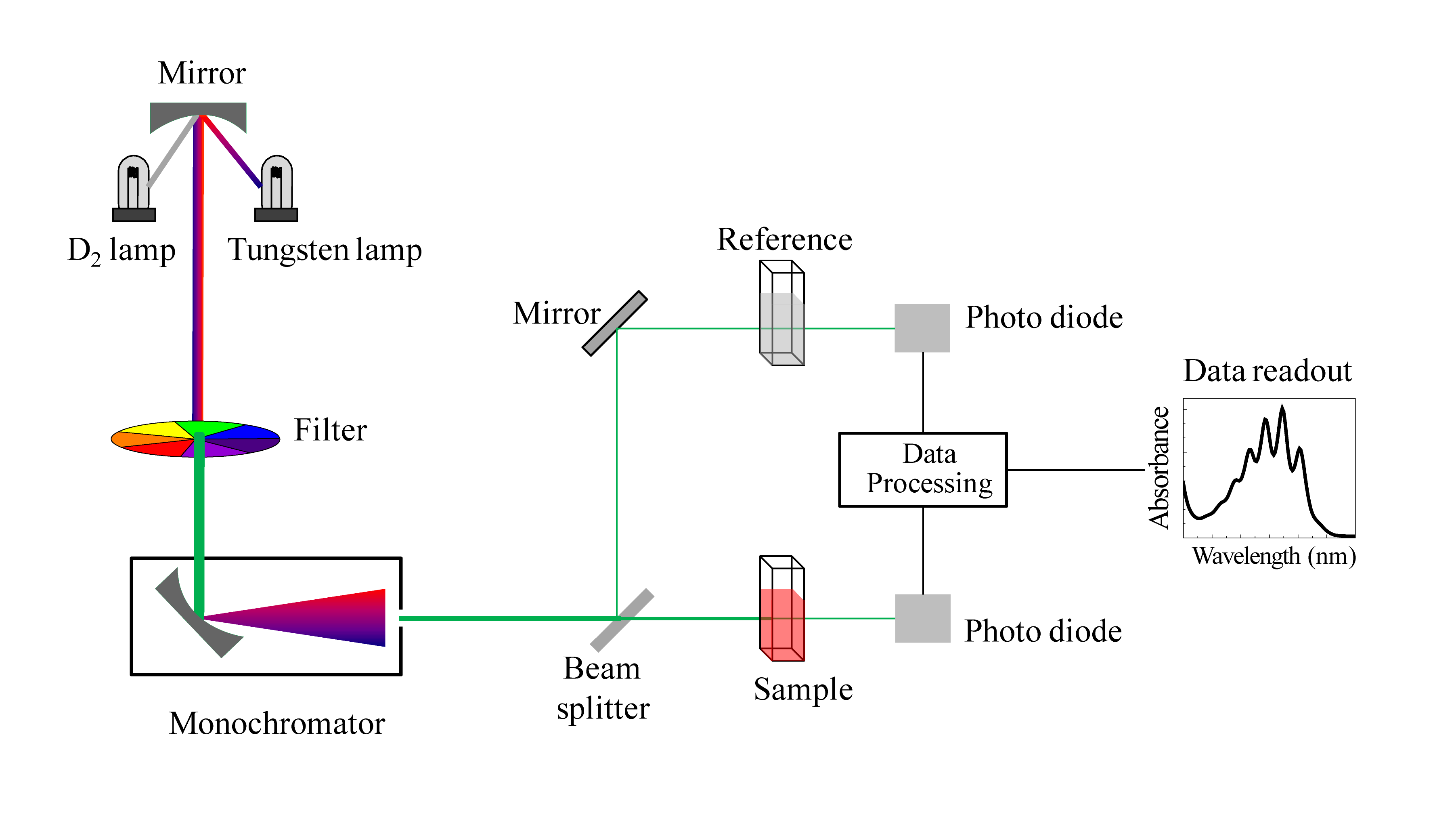UV-Vis Spectroscopy: A Powerful Tool for Nanomaterial Characterization
What is UV-Vis Spectroscopy?
UV-Vis spectroscopy, short for ultraviolet-visible spectroscopy, is an analytical technique that measures the absorption or reflectance of light by a sample in the ultraviolet (UV) and visible (Vis) regions of the electromagnetic spectrum. It is a widely used method for the characterization of nanomaterials, providing valuable information about their optical properties, electronic structure, and size-dependent effects.

Principles of UV-Vis Spectroscopy
UV-Vis spectroscopy is based on the interaction of UV and visible light with matter. When a sample is illuminated, it can absorb photons, causing electronic transitions from the ground state to excited states. The absorbance of light is related to the concentration of the absorbing species through the Beer-Lambert law:
A = ε · c · l
where A is the absorbance, ε is the molar attenuation coefficient, c is the concentration of the absorbing species, and l is the path length of the sample.
The absorption of light by nanomaterials is influenced by several factors, including their composition, size, shape, and surface properties. The optical properties of nanomaterials often differ from those of their bulk counterparts due to quantum confinement effects and enhanced surface-to-volume ratios.
Instrumentation and Measurement
A typical UV-Vis spectrometer consists of the following components:
- Light source: A combination of deuterium and tungsten lamps provides a continuous spectrum covering the UV and visible regions (typically 200-800 nm).
- Monochromator: A dispersive element, such as a prism or grating, separates the polychromatic light into individual wavelengths.
- Sample holder: The sample, usually in the form of a solution or thin film, is placed in a cuvette or on a substrate.
- Detector: A photodiode or photomultiplier tube measures the intensity of the transmitted or reflected light.
During a measurement, the spectrometer scans through the desired wavelength range, and the absorbance or reflectance is recorded as a function of wavelength. The resulting spectrum can be analyzed to extract information about the sample's optical properties and electronic structure.
Applications in Nanomaterial Characterization
UV-Vis spectroscopy finds extensive applications in the characterization of various nanomaterials:
Semiconductor Nanoparticles
UV-Vis spectroscopy is widely used to study the optical properties of semiconductor nanoparticles, such as quantum dots. The absorption spectra of these nanoparticles exhibit distinct features related to their size-dependent bandgap. By analyzing the absorption onset and peak positions, the size and size distribution of the nanoparticles can be estimated.
Metal Nanoparticles
Metal nanoparticles, particularly noble metals like gold and silver, exhibit unique optical properties due to their surface plasmon resonance (SPR). UV-Vis spectroscopy can probe the SPR band, which is sensitive to the size, shape, and dielectric environment of the nanoparticles. This information is valuable for understanding and tuning the plasmonic properties of metal nanoparticles for various applications.
Carbon Nanomaterials
UV-Vis spectroscopy is also applied to characterize carbon nanomaterials, such as carbon nanotubes and graphene. The absorption spectra of these materials provide insights into their electronic structure, chirality, and defect states. UV-Vis spectroscopy can also monitor the functionalization and dispersion of carbon nanomaterials in different solvents.
Advantages and Limitations
UV-Vis spectroscopy offers several advantages for nanomaterial characterization:
- It is a non-destructive and non-invasive technique, allowing the sample to be recovered after measurement.
- It requires minimal sample preparation and can be performed on solutions, thin films, or solid samples.
- It provides rapid and straightforward measurements, making it suitable for routine characterization and quality control.
However, UV-Vis spectroscopy also has some limitations:
- It is a bulk technique, providing averaged information about the sample rather than individual nanoparticles.
- It may not provide detailed structural or compositional information, often requiring complementary techniques for a comprehensive characterization.
- The interpretation of UV-Vis spectra can be challenging for complex systems or in the presence of multiple absorbing species.
Complementary Techniques
UV-Vis spectroscopy is often used in conjunction with other characterization techniques to gain a more comprehensive understanding of nanomaterials. Some complementary techniques include:
- Transmission Electron Microscopy (TEM): Provides high-resolution imaging of individual nanoparticles, revealing their size, shape, and crystal structure.
- X-ray Diffraction (XRD): Offers information about the crystallinity, phase composition, and average particle size of nanomaterials.
- Dynamic Light Scattering (DLS): Measures the hydrodynamic size distribution of nanoparticles in solution.
- Raman Spectroscopy: Probes the vibrational modes of nanomaterials, providing insights into their chemical composition and structural properties.
Further Reading
Asian Journal of Pharmaceutical and Clinical Research, Ultraviolet spectroscopy and its pharmaceutical applications- A brief review
